- Windows Server
- 16 March 2019 at 10:21 UTC
-

When you publish RemoteApp programs from one or more RDS session servers, these are available to your users from multiple locations, including through the web access of your RDS infrastructure.
But, if you look in the settings of your RemoteApp programs, you can find some very interesting features that will improve the user experience.
In our case, we had installed 2 programs of Microsoft Office 2013.
We select the "Excel 2013" RemoteApp program and we click on "Edit Properties".
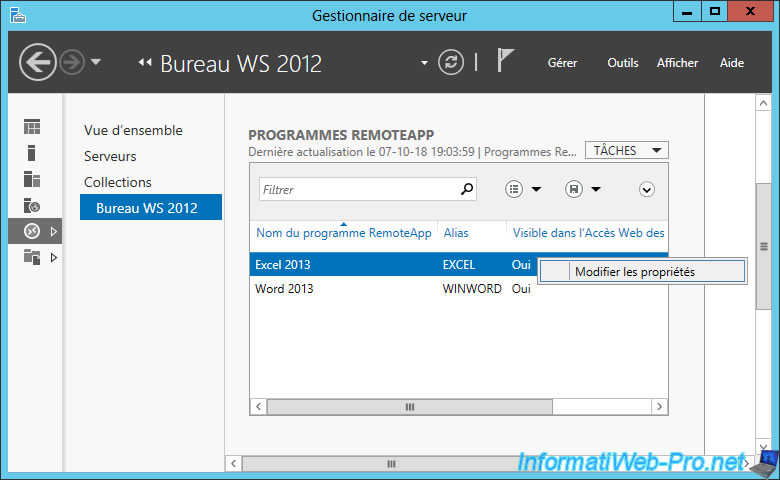
As you can see, in the properties of each RemoteApp program, you will can :
- change the name of the program
- choose if you want to display this program in the web access or not
- group RemoteApp programs into folders
For example, we could create a "Microsoft Office 2013" folder to put our 2 RemoteApp programs : Excel 2013 and Word 2013.
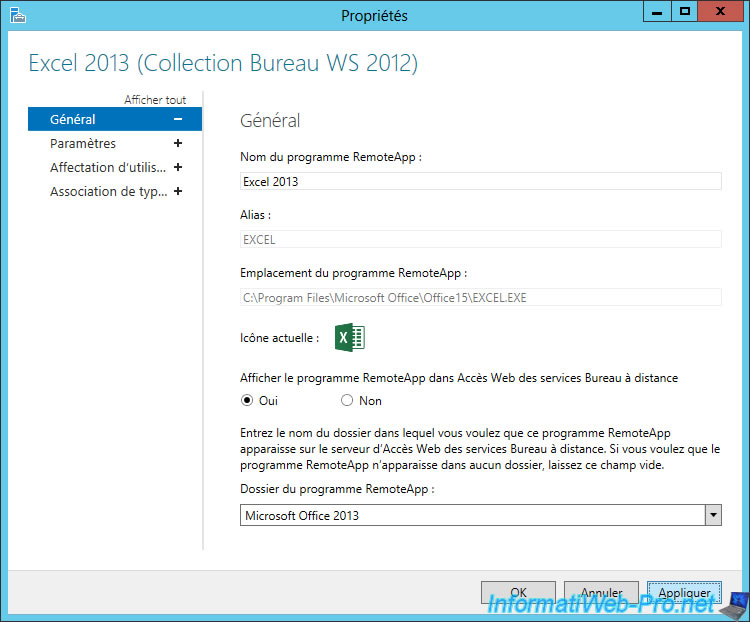
Once you've made this change, sign in on the Remote Desktop web access or refresh the page if you were already logged in.
Our "Microsoft Office 2013" folder appears.
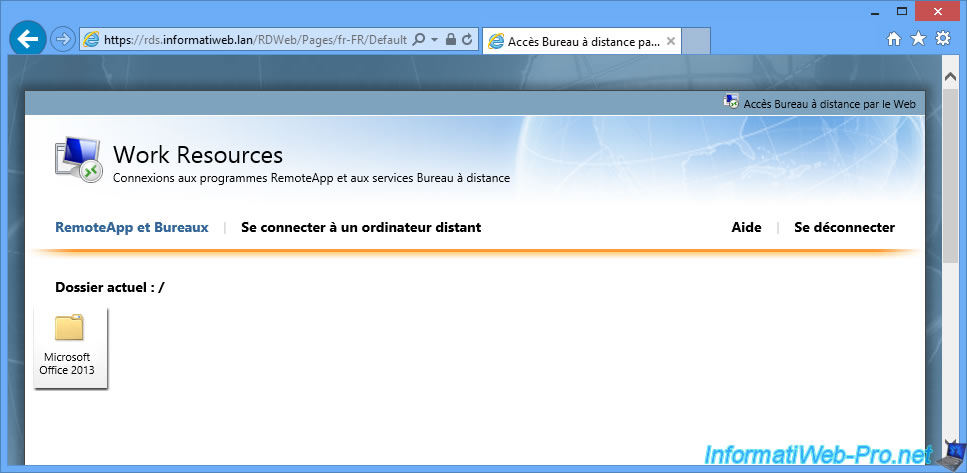
In this folder, we find as expected our 2 RemoteApp programs.
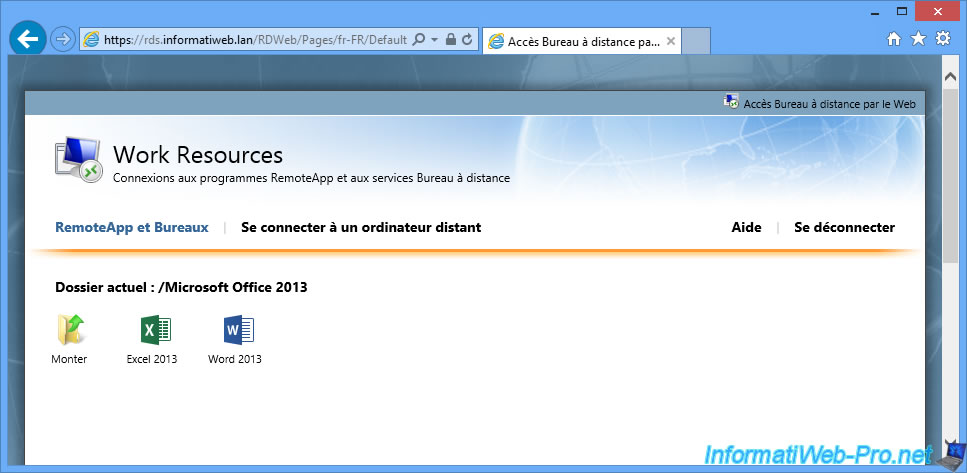
In the properties of your RemoteApp program, you can also add arguments (parameters) to launch your program in a particular way if needed.
However, you will usually leave the default option : Don't allow command-line arguments.
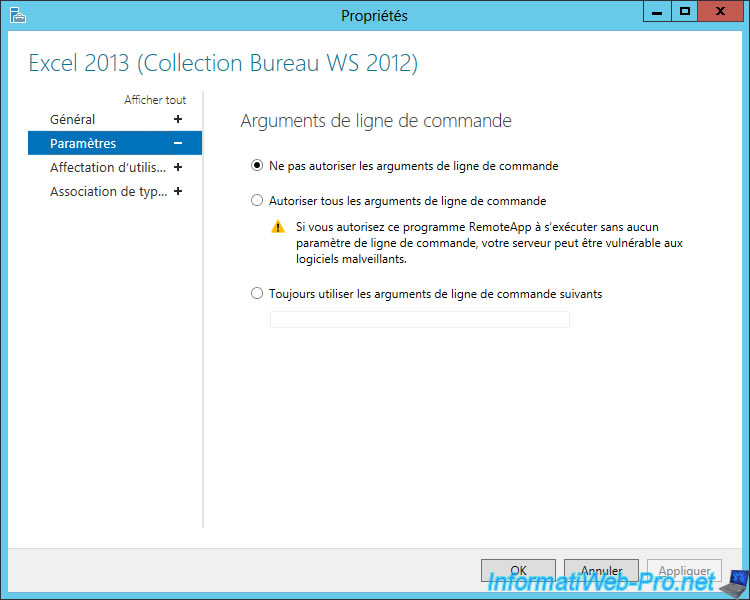
Note that rights are also managed separately in the properties of the collection in which this RemoteApp program is located.
In addition, in order to use this RemoteApp program, users will need to be allowed in the collection properties as well as in the "User assignment" section available in the properties of the desired RemoteApp program.

As we explained in our "RDS - Publish RemoteApp programs (via the graphical interface)" tutorial, it's important to switch your remote desktop session host server into "install mode" when you install programs to publish.
With this operation, the RDS server will be able to detect which file types can be opened with this RemoteApp program.
In the case of Microsoft Excel 2013, you can, for example, seamlessly activate the necessary associations in the Windows settings of your client PCs so that your users can transparently open xls, csv, ... files with the Microsoft Excel 2013 RemoteApp program. (if they have access to it)
As you can see, by default, your RDS server knows the file types supported by your RemoteApp program, but the associations are not automatically configured on the client computers.

This means that even if the user starts Microsoft Excel (in our case), he will not be able to open his local Excel files by double clicking on them.

Indeed, the Windows of the client computer will consider that no compatible program is available to open this type of file.
This is normal since the RemoteApp program actually works on the server and not on the client machine.

Nevertheless, thanks to this rather special feature, Windows will be able to link the remote program and the local files supported by this remote program.

Once the change is made on the server, reboot the client computer if necessary and you will see that Excel files will now be recognized by Windows.

If the user double-clicks the Excel file on the local computer, a RemoteApp window will appear with the name of the RemoteApp program that supports that type of file.

Log in if Windows asks you.
Note : this double authentication can be avoided by following our tutorial : RDS - Enable single sign-on (SSO) for access to RemoteApp programs and published desktops

Like magic, the local file opens through the RemoteApp program currently running on your RDS server.

Share this tutorial
To see also
-

Windows Server 6/7/2019
WS 2012 / 2012 R2 - RDS - Set up HA on your RDS infrastructure
-

Windows Server 3/8/2019
WS 2012 / 2012 R2 / 2016 - RDS - Access RemoteApp via a modern application
-

Windows Server 4/28/2019
WS 2012 / 2012 R2 / 2016 - RDS - Attempt to unblock the session as a user
-

Windows Server 1/13/2019
WS 2012 / 2012 R2 / 2016 - RDS - Configure user profile disks (UPD)


You must be logged in to post a comment